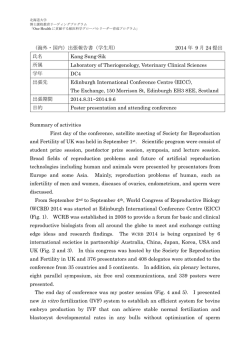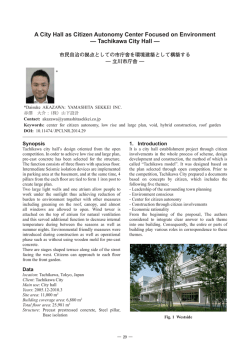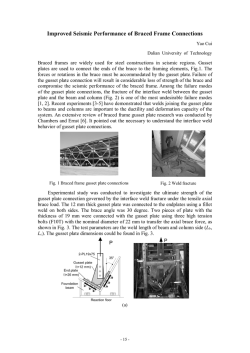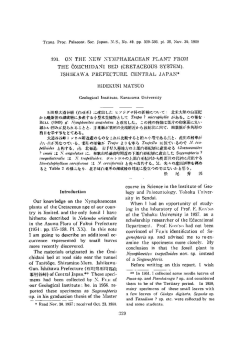
容量―電圧特性から推定したhigh-k/InGaAs MOS
第 61 回応用物理学会春季学術講演会 講演予稿集(2014 春 青山学院大学) 19p-PG2-11 容量―電圧特性から推定した high-k/InGaAs MOS キャパシタの酸化膜トラップ分布 Determination of oxide traps distribution in high-k/InGaAs MOS capacitor by capacitance-voltage measurement 東工大フロンティア研 1, 東工大総理工 2, ○ 竇春萌 1, 2 角嶋邦之 2, 片岡好則 2, 西山彰 2, 杉井信之 2, 若林整 , 筒井一生 1, 名取研二 1, 岩井洋 1 Tokyo Tech. FRC1, IGSSE 2, ○C. Dou1, K. Kakushima2, Y. Kataoka2, A. Nishiyama2, N. Sugii2, H. Wakabayashi2, K. Tsutsui2, K. Natori1, H. Iwai1 E-mail: [email protected] Introduction: To realize high performance III-V based n-MOSFETs, a crucial issue arousing increasing attention is the existence of large amounts of oxide traps near or above the conduction band minima, which may degrade on-state performance of the devices severely [1]. In this study, we propose a method to determine the distribution of oxide traps in energy and space by an empirical model to evaluate the frequency (f) and temperature (T) dependent response of oxide traps using the equations summarized in Table I. Model description: The time constant of oxide traps, bt, can be given by Eq. 1 [2], where 0 is the time constant at the interface, is the tunneling decay factor and x is the distance from the interface into the oxide. 0 can be given by Eq. 2, where NC is density of conduction band states, is the capture cross-section and vth is the thermal velocity. The temperature dependency of 0 is inferred to be dominated by thermal activated governed by Eq. 3 [3], where 0 is the pre-factor and Eb is the activation energy. Therefore, the temperature and frequency dependent probing depth, XP, can be given by Eq. 4. Adopting commonly used parameters for In0.53Ga0.47As, the XP at 100 Hz and 1 MHz as a function of temperature is shown in Fig. 1. Results and discussion: XP decreases with increasing frequency or decreasing temperature. In the 100 Hz to 1 MHz C-V measurement (Fig. 1), while the response of the oxide traps reside in Region I/III is too fast/slow to be detected, the oxide traps in Region II contribute to the frequency dispersion of the C-V curves in accumulation. Therefore, the temperature dependent frequency dispersion in accumulation actually reflects the spatial distribution of oxide traps. A method to profile the oxide traps is proposed and the result is shown in Fig. 2. . Reference: [1] M. Heyns, et al., IEDM, pp. 299-302 (2011). [2] F. P. Heiman, et al, IEEE Trans. Electron Devices, vol. ED-12, no. 4 (1965). [3] D. K. Schroder, Semiconductor Material and Device Characterization, New York : Wiley (2006). Table I. Summary of the equations used to evaluate the probing depth: Fig. 1. Probing depth at 100 Hz and 1 MHz as a function of temperature Ⓒ 2014 年 応用物理学会 13-091 Fig. 2. Extracted oxide traps distribution in energy and space in high-k/InGaAs MOSCAP
© Copyright 2025







